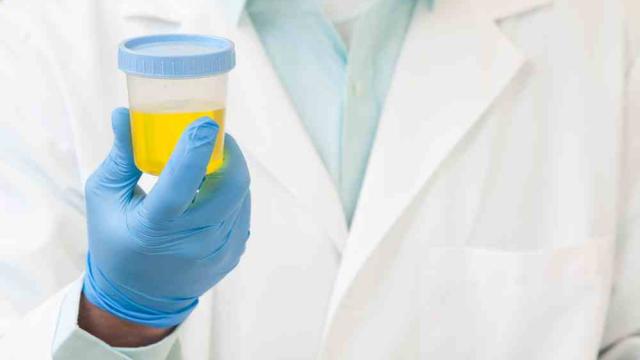If you’ve ever taken a daily multivitamin, you too might have noticed your urine turning a bright yellow-ish colour. Take your vitamins and eat some asparagus, and you might just think you’re dying the next time you pee!
What’s happening is that urine will turn a bright, sometimes neon yellow in response to excess riboflavin.
Riboflavin, also known as vitamin B2, is a common ingredient in almost all multi-vitamins. It was first discovered in 1872, when chemist Alexander Wynter Blyth noticed a pigment in milk that was yellow-green.
In 1879, it was reported as lactochrome and lactoflavin. It wasn’t until the 1930s that the substance giving off a yellow pigment was characterised as riboflavin. (The “flavin” portion coming from the Latin word “flavus”, meaning “yellow” or “blonde”.)
So why does riboflavin give off a yellowish colour? Like almost anything that has colour, it all comes down to light absorption.
Light, in general, is merely electromagnetic radiation. This radiation comes to us in a waveform and is classified by its wavelength. Shorter wavelengths come to us in the form of x-rays and ultraviolet light. Longer wavelengths come to us in the form of things like microwaves and radio waves. The light we can see is actually only a very narrow band of wavelength between 400-700 nanometers in length. The colour is classified by the length. For example, 400-500nm will appear blue, and 600-700nm will appear red.
The colours we see are a result of the wavelengths not absorbed by the material. So if a material absorbs light in the 400-500nm range (blue) then the colour we will perceive is in the 500-700nm range (greens, yellows and reds).
Riboflavin, specifically, absorbs light strongly in the 260-370nm range. While this falls outside of the light we can see with our eyes, it’s also Riboflavin’s ability to absorb light at 450nm (the blues) that give it its distinctive yellowish colour.
So why does it turn pee yellow? The answer is simply how the body gets rid of excess.
Several studies have shown that approximately 50 per cent of all excess riboflavin gets excreted in the urine. Those same studies show that the maximum amount that can be absorbed in a single dose was about 27mg, with half of that being absorbed in the first 1.1 hours. Given that the recommended adult daily intake of riboflavin is between 1-1.6mg per day and some common doses of riboflavin in multivitamins (that I could find) are 25, 50, and 100 mg, it’s easy to see that excess amounts can be easily attained.
The result is a nice colour to your urine that, if you’re a hypochondriac, may make you think you’re dying. As a doctor friend of mine remarked when I was discussing this with him and excessive amounts of unneeded vitamins Americans buy every year, “Americans have the most expensive urine in the world. It’s like flushing money down the drain.”
Bonus Facts:
- Riboflavin is needed for numerous functions within the body. Specifically, it can help with the proper development, and function, of our skin, the lining or our digestive tract, and the production of blood cells.
- Common foods that contain riboflavin are: milk, nuts, dairy products, eggs, lean meats and leafy vegetables like spinach. Fortified (meaning riboflavin was added to it) foods are commonplace, including breads and cereals.
- The term “vitamin” was first put forth by Cashmir Funk, a Polish scientist in 1912. It comes from the Latin word “vita” meaning “life”, combined with “amine” after certain compounds such as thiamine which he was able to isolate from rice husks. He worked with Sir Frederick Gowland Hopkins who discovered that parts of food were essential in human health. Working together, they formed theories revolving around the lack of certain vitamins causing disease processes and making people sick.
- Riboflavin, and its efficacy, can be destroyed by exposure to light. This is why you should limit this vitamin’s exposure to light and you shouldn’t store it in glass containers.
- According to a Nielsen study in 2009, 40 per cent of the world’s population use vitamin supplements. The countries with this highest percentage of their population using vitamin supplements are the Philippines and Thailand (66 per cent). The US comes in at 56 per cent, with 40 per cent using vitamins daily. The US also has the highest volume of vitamin consumption. The two countries with the lowest vitamin use are France (17 per cent) and Spain (13 per cent).
- There are eight total B vitamins. They are: B1-thiamine, B2-riboflavin, B3-niacin, B5-pantothenic acid, B6-Pyridoxal, Pyridoxine, or Pyridoxamine, B7-biotin, B9-folic acid and B12-cobalamin or in supplement form cyanocobalamin.
Scott writes for the wildly popular interesting fact website TodayIFoundOut.com. To subscribe to Today I Found Out’s “Daily Knowledge” newsletter, click here or like them on Facebook here. This post has been republished with permission.
